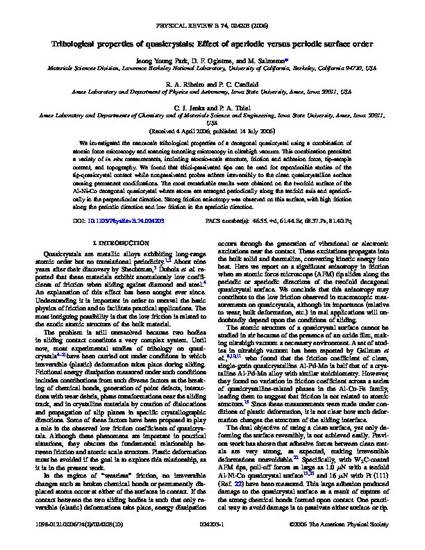
We investigated the nanoscale tribological properties of a decagonal quasicrystal using a combination of atomic force microscopy and scanning tunneling microscopy in ultrahigh vacuum. This combination permitted a variety of in situ measurements, including atomic-scale structure, friction and adhesion force, tip-sample current, and topography. We found that thiol-passivated tips can be used for reproducible studies of the tip-quasicrystal contact while nonpassivated probes adhere irreversibly to the clean quasicrystalline surface causing permanent modifications. The most remarkable results were obtained on the twofold surface of the Al-Ni-Co decagonal quasicrystal where atoms are arranged periodically along the tenfold axis and aperiodically in the perpendicular direction. Strong friction anisotropy was observed on this surface, with high friction along the periodic direction and low friction in the aperiodic direction.
Available at: http://works.bepress.com/paul_canfield/21/

This article is from Physical Review B 74, no. 2 (2006): 024203, doi:10.1103/PhysRevB.74.024203.